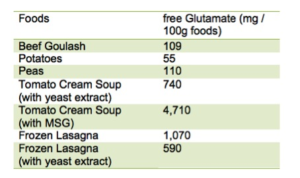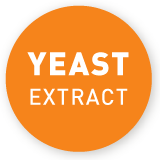Glutamate is naturally contained in many food products. At the professional forum in Munster, students presented the results of their own research, which they executed under the supervision of Prof. Dr. Ursula Bordewick-Dell.
As part of their project work, the students had analysed the content of glutamate in fresh foods such as peas, potatoes, beef as well as processed foods such as instant soups, bouillons and frozen meals. The results showed that all unprocessed foods that were analysed contained natural glutamate: According to the calculations, one portion of homemade beef goulash with potatoes and peas contains around 430 milligrams of glutamate. Furthermore, the glutamate content of processed foods strongly depends on the composition and quality of the ingredients used. The degree of ripeness in the case of tomatoes and cheese as well as the meat content influence the glutamate level. The investigations also showed that when the flavour enhancer monosodium glutamate was used, the glutamate content was higher than in comparative products with yeast extract or without any additives. When adding the ingredient yeast extract with its natural glutamate, the glutamate content of the tested convenience food was low.
A selection of the results:




